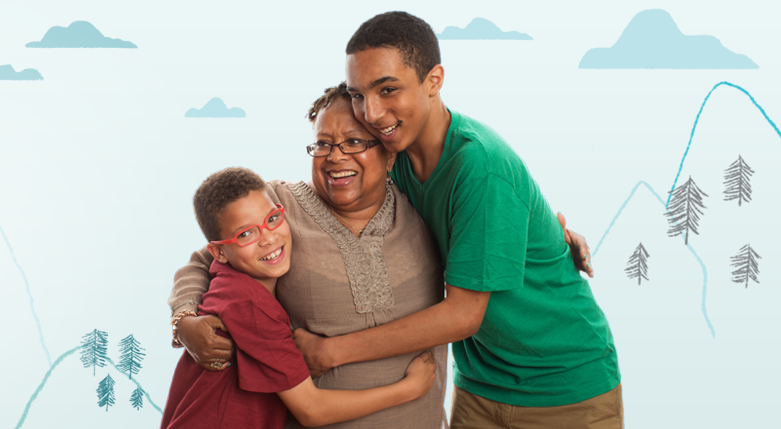Common Myths About Foster Care and Adoption

Foster care and adoption from foster care are often misunderstood, resulting in some children never finding a permanent home or forever family. We’ve identified some of the most common myths about foster care and adopting from foster care below along with their realities:
MYTH: I have to be married, wealthy and own my home in order to foster or adopt.
REALITY: People from all types of backgrounds can foster or adopt a child. Whether you are single or married, own or rent your home, have children already or don’t, work full-time or stay home, you may be eligible. Adoptive and foster parents DO have to complete free training classes, be at least 21 years of age, pass background checks, and be able to provide a stable and loving home for a child or children who have experienced abuse or neglect.
Do you believe every child deserves to be safe and connected to a strong family? Join us to receive a few inspiring stories each month and help end childhood adversity. Subscribe here!
MYTH: I have to be a stay-at-home parent.
REALITY: Parents can continue to work full-time jobs and use childcare options. It is no different than caring for a biological child.
MYTH: I have to have children and parenting experience.
REALITY: There many foster parents that do not have biological children of their own; however, they are mature, responsible people who have made a commitment to care for a child and demonstrate the ability to parent or a desire to learn parenting skills.
MYTH: Most children in foster care are teenagers.
REALITY: The median age of children in foster care in the U.S. is eight. Almost 50% are over age 10, and an estimated 70% have siblings in foster care. Source: AdoptUSKids
Our teenage population has the greatest need for loving families at this time. We also have a need for families to care for sibling groups of three or more and children with special needs.
MYTH: Children in foster care have experienced trauma that is beyond repair.
REALITY: It’s incredible what a structured environment and support system can do for a child. Foster and adoptive parents have the ability to positively impact a child who has experienced trauma, teach them healthy coping skills and help them grow into a thriving individual. KVC has also developed a hands-on training curriculum to help professionals and caregivers know how to help children heal from traumatic stress.
MYTH: I have to provide several things on my own such as clothing and medical insurance if I foster a child.
REALITY: KVC considers our foster family program to be a volunteer service; however, we reimburse at a rate of $20 per day for each child. The reimbursement is paid monthly via direct deposit and meant to subsidize for care of the child. Each of the children in the custody of the State of Kansas receives a medical card when they are removed from their family home. Some children are also covered under their family’s private insurance.
MYTH: It’s easier and faster to adopt internationally than from U.S. foster care.
REALITY: In 2011, there were 51,000 children adopted through U.S. foster care while less than 10,000 were adopted by U.S. citizens from all international sources combined. On average, it takes roughly six months to a year to adopt a child from the U.S. foster care system. Most domestic adoptions are free and any minimal costs associated with them are often reimbursable.
Source: AdoptUSKids
MYTH: I have no control over which child is placed in my foster home.
REALITY: The KVC’s Admissions Department will contact you to request the placement of a child in your home, and this is an opportunity for you to ask questions and find out more about the child or youth. You may say, “No” to any placement for any reason. KVC has a database meant to alert Admissions staff to what types of children you are interested in fostering. You can only accept children who fall within your licensing capacity.
MYTH: Each child I foster has to have a room of their own.
REALITY: Each child needs a bed of their own. Sofa beds and futons are excluded. If children are sharing bedrooms, each child must have at least 45 square feet of space.
Browse our website to learn more about foster care, adopting from foster care, or how to become a foster parent
Related articles:
- 5 Things You Need to Know About Foster Care
- Short Film Follows Emotional Journey of Young Girl in Foster Care
- “Children of the System” Documentary Examines Foster Care in America
- Chrissy’s Story – Child Abuse Survivor Now Helps Other Children Heal and Find Loving Homes
- 5 Ways You Can Help a Child in Foster Care Without Being a Foster Parent





